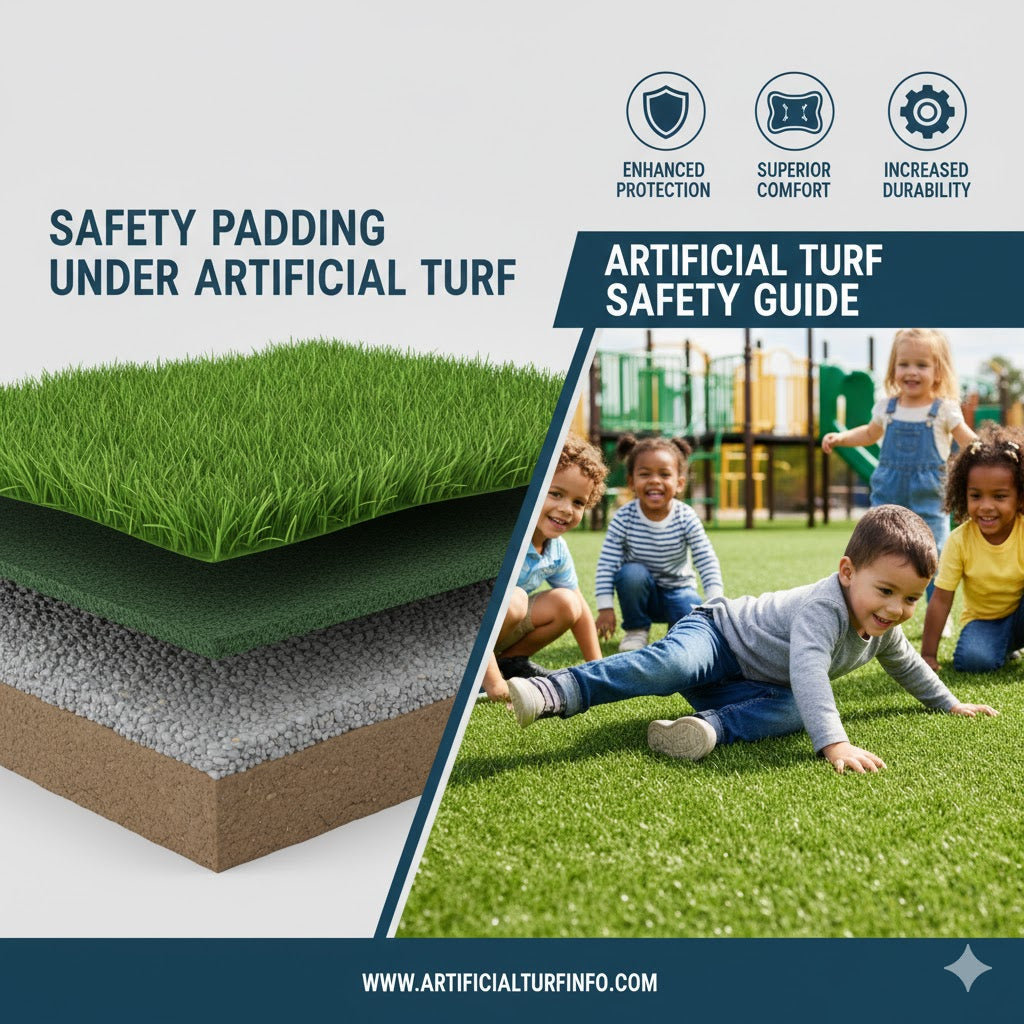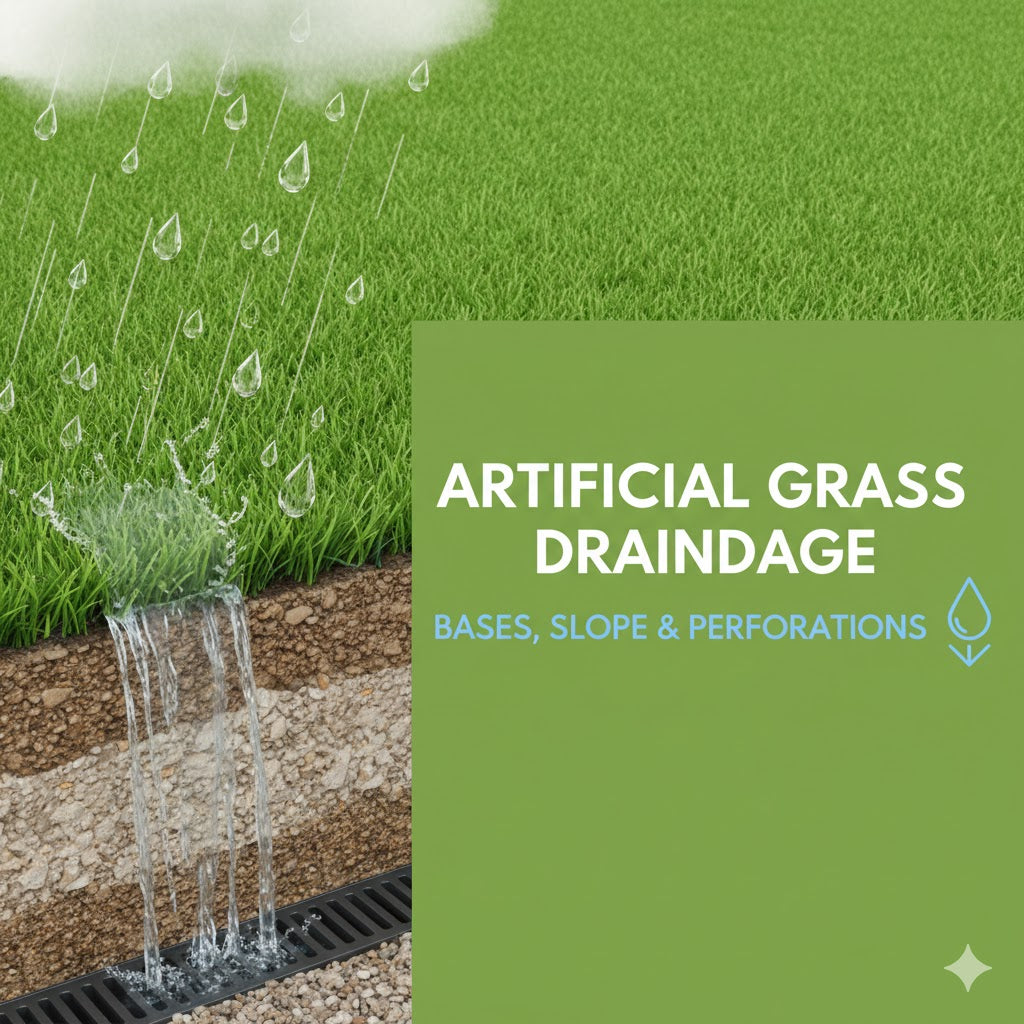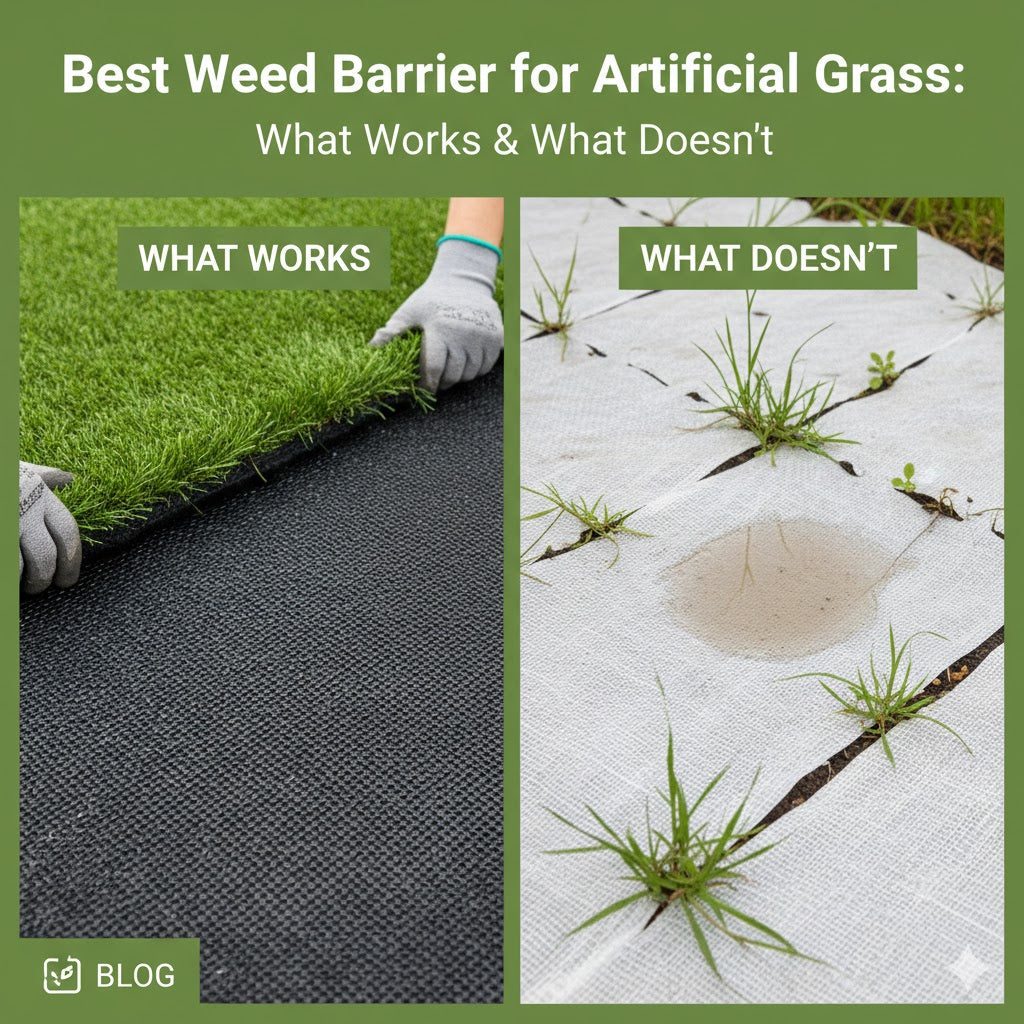Many people use safety padding under artificial turf to make sports fields, playgrounds, and yards safer. This hidden layer sits right between the turf and the base. It helps absorb impact and lowers the risk of injuries when someone falls or slides.
Without it, the ground can feel hard and unsafe, especially for kids and athletes. The padding also keeps the turf even, adds comfort, and helps it last longer.
In this complete guide, you’ll learn how safety padding works, what it’s made of, and why it’s so important. You’ll also see how it meets safety standards and improves performance on different types of synthetic turf.
Why Safety Padding Under Artificial Turf Matters?
Safety padding under artificial turf is a soft layer that sits between the turf and the ground base. Many people call it a shock pad or foam padding. Its main job is to make the surface safer and easier on the body. When someone falls, the padding absorbs the impact and helps prevent injuries like bruises, head bumps, or sore joints.
This padding also helps the turf stay even and last longer. It supports the turf backing and keeps it from rubbing against the hard ground. Many sports fields and playground turf systems use safety padding to meet safety tests such as GMAX and Critical Fall Height. These tests check how well the turf system can absorb shock and protect people from injury.
Safety & Performance Standards
Every safe field needs proper safety padding under artificial turf to meet official safety standards.
1. GMAX Test – Measuring Surface Hardness
The GMAX test checks how hard or soft the turf feels when hit.
-
A lower GMAX value means the surface is softer and safer.
-
Sports fields must stay within approved GMAX ranges to reduce head and body injuries.
2. Critical Fall Height (CFH) – Measuring Safe Fall Distance
The Critical Fall Height test measures how high a person can fall without serious injury.
-
It’s mainly used for playground turf systems.
-
Padding that passes this test helps protect children from high-impact falls.
3. ASTM and EN Standards – Global Safety Rules
Groups like ASTM International and World Rugby create and manage these standards.
-
ASTM F1936 and F355 apply to sports turf systems.
-
ASTM F1292 and EN 1177 apply to playgrounds and recreational areas.
These tests confirm that the full turf system—including pad, turf, and infill—absorbs enough impact to stay safe.
Types of Safety Padding / Shock Pads
There are several kinds of safety padding under artificial turf, and each serves a slightly different purpose.
1. Prefabricated Foam Pads
-
Made from materials like polyurethane foam, EPE, or EPP.
-
Available in easy-to-install sheets or rolls.
-
Offer strong shock absorbency and cushioning for players.
-
Lightweight, flexible, and ideal for both sports fields and playgrounds.
2. In-Situ Rubber Pads
-
Built directly on-site instead of being pre-made.
-
Installers mix rubber granules with glue and spread the blend evenly over the base.
-
Creates a smooth, durable, and well-draining surface.
-
Often used for athletic fields and playground systems where custom shaping is needed.
3. Hybrid Drainage Pads
-
Combine foam padding with drainage channels built inside.
-
Let water pass through quickly, preventing puddles or slippery spots.
- Great for outdoor sports turf or playground turf areas with heavy rain.

Benefits of Using Safety Padding Under Artificial Turf
Adding safety padding under artificial turf brings many advantages for both safety and performance.
1. Better Impact Absorption
The main benefit is improved shock absorbency. When players fall or move fast, the padding cushions the impact and lowers the risk of injuries like bruises, concussions, or joint pain.
2. Enhanced Player Protection and Comfort
The padding helps athletes move freely and play longer without strain. On playground turf, it adds an extra safety layer that meets ASTM standards for fall protection.
3. Longer Turf Lifespan
Padding keeps the turf backing from rubbing against the hard base. This reduces friction, prevents damage, and helps the surface stay even and durable for many years.
4. Environmentally Friendly Design
Many modern pads are made from recycled materials, making them safe for the environment. Using these eco-friendly options supports waste reduction and long-term sustainability.
How to Select the Right Safety Padding
Choosing the right safety padding under artificial turf depends on how and where it will be used.
-
Match the use:
-
Sports fields: Pick pads that meet GMAX limits and ASTM standards.
-
Playgrounds: Choose pads that meet Critical Fall Height (CFH) safety tests.
-
Gyms: Go for softer pads that absorb repeated impact.
-
Sports fields: Pick pads that meet GMAX limits and ASTM standards.
-
Pick the right thickness:
-
Thicker pads offer better impact attenuation and protection.
-
10–20 mm pads work well for sports.
-
Thicker pads suit playgrounds or higher fall areas.
-
Thicker pads offer better impact attenuation and protection.
-
Check drainage features:
-
Pads with drainage channels or lateral drainage prevent water buildup.
-
Good drainage keeps turf dry and reduces slips.
-
Pads with drainage channels or lateral drainage prevent water buildup.
-
Choose eco-friendly materials:
-
Look for pads made from recycled materials or foam rubber.
-
These options are durable and environmentally friendly.
-
Look for pads made from recycled materials or foam rubber.
-
Select trusted brands:
-
Reliable makers like LitaGrass offer American-made pads that are long-lasting and easy to install.
-
Reliable makers like LitaGrass offer American-made pads that are long-lasting and easy to install.
Best Practices for Installation
Installing safety padding under artificial turf the right way makes a big difference in safety and turf life.
Prepare a smooth base:
Compact the ground properly and remove debris or bumps before laying the pad. An even base ensures the turf sits flat and looks professional.
Lay padding tightly:
Place each piece close together with no gaps. Tight seams prevent the pad from moving or wrinkling once the turf is installed.
Use seam sealer or tape:
Seal or tape the joints between pads to keep sections secure. This improves stability and extends the pad’s lifespan.
Allow for temperature changes:
Some pads expand or contract with heat or cold. Leave slight room for natural movement to prevent ridges or uneven surfaces later.
Check drainage direction:
Make sure pads with drainage channels or moisture barriers face the correct way so water flows away quickly and doesn’t pool under the turf.
Follow manufacturer guidelines:
Each pad type has its own requirements. Always read and follow the maker’s installation instructions closely.
Use trained installation teams:
Professionals know how to handle seams, slopes, and drainage for long-lasting, safe results.
Common Mistakes to Avoid
-
Skipping base preparation or installing on uneven ground.
-
Leaving gaps between pads or failing to seal seams properly.
-
Ignoring temperature movement that causes bulges or ridges.
-
Misaligning drainage channels, which can trap water underneath.
-
Storing pads in direct sunlight or installing on wet soil.
-
Attempting DIY installation without expert guidance.

Testing, Maintenance & Lifespan
Installing safety padding under artificial turf is just the start — regular testing and care keep it safe and durable.
1. Testing
-
Test GMAX and Critical Fall Height after installation.
-
Repeat testing once a year to track hardness and impact safety.
-
Add infill or repair padding if the surface feels too firm.
-
Keep results within safety limits to protect players and kids.
2. Maintenance
-
Clean turf often—remove dirt, leaves, and debris.
-
Brush fibers to keep them upright and even.
-
Fix lifted seams or edges right away.
-
Make sure drainage channels stay clear.
3. Lifespan
-
Most pads last 8–10 years with good care.
-
Foam rubber and recycled polyethylene foam pads can last longer.
- Regular testing and cleaning extend both turf and pad life.
Conclusion
Adding safety padding under artificial turf is one of the best ways to make any turf surface safer and stronger. This hidden layer protects players, kids, and pets by absorbing impact and lowering the chance of injuries. It also helps turf last longer, drain better, and stay smooth over time.
When choosing a pad, always look for one that meets ASTM standards and fits your field’s purpose. Think about safety, drainage, and durability before you buy. Work with trusted installation teams to make sure the pad is fitted and sealed the right way.
Whether it’s a sports field, playground turf, or a home project, safety padding is a smart investment. It gives peace of mind and better performance for everyone who uses the turf. Ready to make your turf safer? Explore high-quality turf and padding options at LitaGrass.
Frequently Asked Questions (FAQ)
1. What is safety padding under artificial turf?
Safety padding under artificial turf is a soft layer placed between the turf and the base. It absorbs impact and helps prevent injuries from falls or rough play.
2. Why is safety padding important for sports fields and playgrounds?
Padding helps lower the risk of head and body injuries. It makes the turf safer, more comfortable, and compliant with safety rules like ASTM standards and Critical Fall Height limits.
3. How long does safety padding last?
Most pads last as long as the turf, usually 8 to 10 years. High-quality pads made from foam rubber or recycled materials can last even longer if maintained well.
4. Does padding affect drainage?
Yes. Many pads have drainage channels or holes that move water away from the turf. This keeps the surface dry and helps avoid slippery spots after rain.
5. Is safety padding environmentally friendly?
Many modern pads are made from recycled materials, such as recycled polyethylene foam or polyurethane foam. These are safe, durable, and help reduce waste.



Leave a comment
This site is protected by hCaptcha and the hCaptcha Privacy Policy and Terms of Service apply.